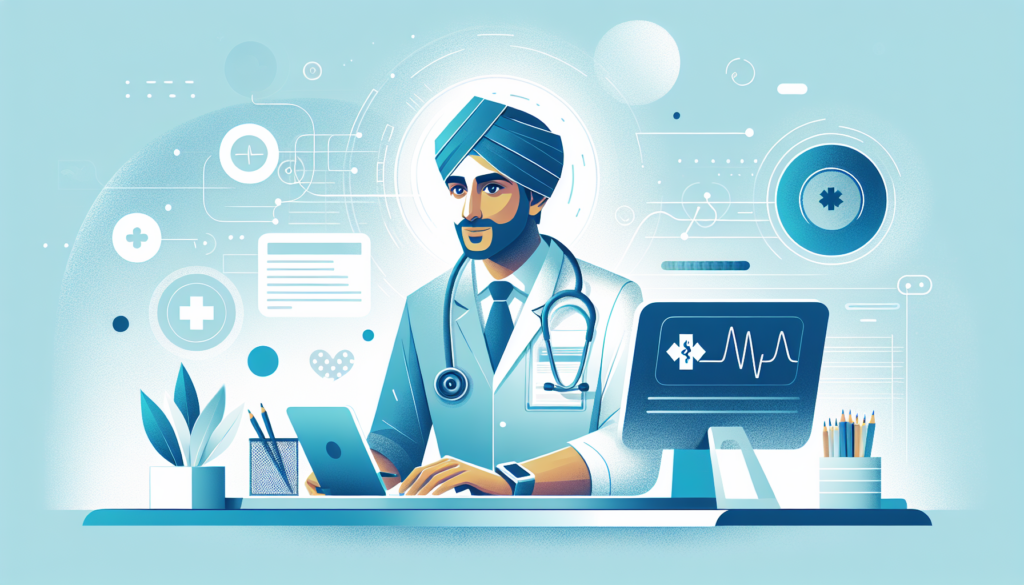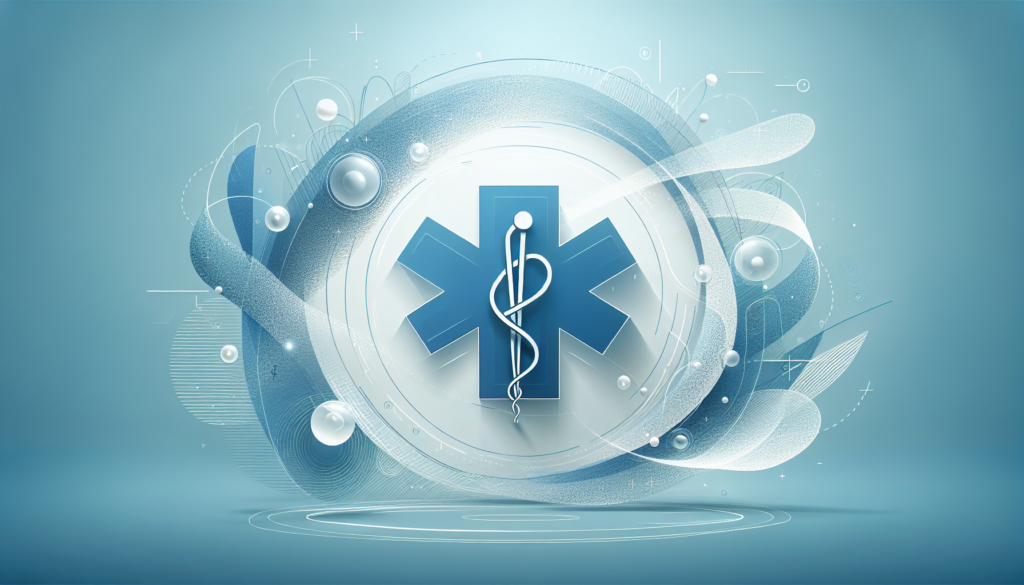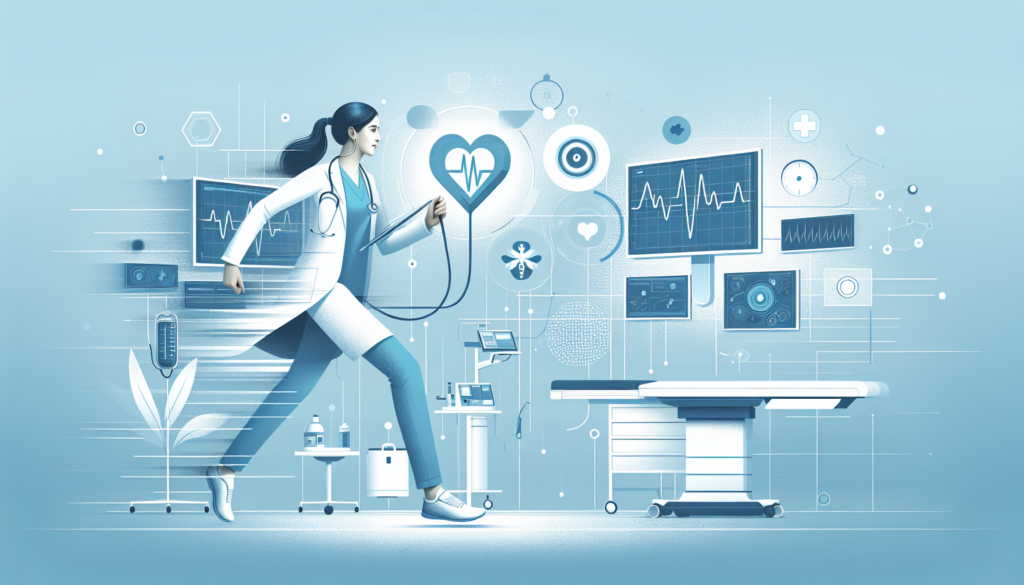The Basics of Dictation in Writing
Dictation is a powerful tool in the realm of professional writing, serving as a bridge between spoken words and written text. Its fundamentals are rooted in the skillful conversion of speech into accurate and coherent documentation. This process goes beyond mere transcription; it involves understanding the nuances of language, context, and intent. In medical environments, where the stakes are high and details are crucial, the basics of dictation take on an even more significant role. Professionals leveraging dictation tools need to be well-versed in its optimal use to ensure the highest standards of documentation.
Dictation starts with clear articulation, as clarity is the cornerstone of successful voice-to-text conversion. Medical professionals must enunciate, regulate their pace, and use appropriate terminology to ensure precision. Moreover, the context in which terms are used is incredibly important—medical jargon has to be employed accurately to convey the correct information. Establishing good dictation practices is not an overnight task; it takes consistent effort and mindfulness to become adept.
- Clear Articulation – Ensures the voice-to-text engine accurately captures words
- Regulated Pace – Helps maintain coherence and allows for proper interpretation
- Medical Terminology – Must be used appropriately to uphold professional standards
- Context and Intent – Vital for the accurate portrayal of the patient’s narrative
Contemporary dictation systems, especially those designed for medical scenarios, have evolved to incorporate advanced AI and language learning models. They are capable of near-simultaneous interpretation and conversion of speech into well-structured medical notes. These platforms handle accents, varied speaking speeds, and industry-specific terminology with increasing accuracy, learning from interactions to enhance performance over time. Nevertheless, awareness and practice of dictation basics by users remain fundamental to achieving optimal results.
Familiarity with dictation equipment and its operation also lies at the heart of effective usage. Whether using a traditional dictaphone or modern AI-powered digital platforms like ScribeMD, knowing the capabilities and limitations of the technology is crucial. Adjusting settings to fit the individual needs of the user, such as sensitivity to voice or noise cancellation features, can contribute to seamless dictation experiences. As dictation technology becomes increasingly sophisticated, so too must the foundational skills of the professionals who rely on them.
- Advanced AI Integration – Enhances the accuracy and responsiveness of dictation tools
- Interactivity with Technology – Users must understand and navigate dictation platforms competently
- Customization – Adjustments to technology settings can vastly improve dictation quality
- Continuous Learning – Dictation systems and users can grow in efficiency together
How Dictation Transforms the Writing Process for Medical Professionals
For medical professionals, the writing process is often laden with the challenges of accurately capturing patient information while balancing time constraints. Dictation emerges as a transformative tool in this high-pressure environment. Through the act of vocalizing observations and notes, healthcare providers can streamline the creation of medical records, ensuring a more efficient and comprehensive documentation process. Utilizing modern technologies like AI-powered digital scribes, allows for an even smoother integration of dictation into their workflow, harnessing the power of voice to expedite clerical duties without sacrificing detail or accuracy.
One of the most significant ways dictation revamps the writing process is by significantly reducing the time investment required for note-taking. Medical practitioners can speak far faster than they can type or write by hand, trimming down the hours spent on paperwork. Given the rapid nature of clinical settings, this time-saving aspect translates to more patient-facing interactions and enhanced quality of care. Dictation also accommodates those who may find typing cumbersome or less efficient, providing an alternative pathway to creating detailed medical records.
– **Time Efficiency**: Dictation speeds up the note-taking process.
– **Ease of Use**: Accommodates different skillsets and preferences.
– **Detailed Documentation**: Ensures comprehensive patient records.
Moreover, dictation lays the groundwork for nuanced documentation that may be lost in translation when solely relying on traditional typing or handwriting. The subtleties of a medical professional’s observations and patient interactions are captured in real-time, offering a rich, contextual backbone to patient records. This detailed oral account can lead to more personalized patient care plans, as it allows healthcare providers to note subtleties that may otherwise be overlooked. By facilitating a more personal and accurate depiction of patient encounters, dictation stands as a critical component in the bridge between patient care and the ensuing documentation.
– **Richer Context**: Captures the intricacies of patient interactions.
– **Personalized Care**: Leads to more tailored patient care plans.
– **Accurate Representation**: Offers a true reflection of clinical encounters.
As dictation technology advances, its integration with AI and machine learning is particularly promising for the medical field. This synergy between the human voice and intelligent algorithms presents a future where administrative tasks are not just quicker but are also propelled by heightened accuracy. Features such as natural language processing ensure that the algorithm understands not only the words but the intent behind them, enabling the creation of precise and contextually aware medical notes. In an increasingly digital healthcare landscape, dictation serves as a critical evolution in documenting patient care, heralding a new era of efficiency and efficacy for medical professionals.
– **Technological Advancements**: Integration of AI for heightened accuracy.
– **Natural Language Processing**: Understands the intent behind speech.
– **Digital Healthcare**: Dictation as a pivot towards modernized medical documentation.
Advanced Technologies Powering Modern Dictation Tools
In an era where efficiency is paramount, advanced technologies in modern dictation tools have been transformative for medical professionals. These tools are powered by state-of-the-art speech recognition algorithms that adapt to various accents and dialects, ensuring precise transcription. The integration of natural language processing (NLP) allows the software to understand context, thus enabling it to differentiate between homophones and technical jargon. Moreover, machine learning capabilities enhance the accuracy over time, as the system learns from corrections and becomes more attuned to users’ speech patterns and idiosyncrasies.
Beyond mere voice-to-text functionalities, these sophisticated dictation tools are equipped with AI-powered clinical decision support. This involves parsing through vast databases to offer real-time suggestions that aid in diagnosis and treatment plans. Concurrently, automated workflow integration seamlessly inputs transcribed notes into Electronic Health Records (EHRs), reducing the potential for errors and ensuring a consistent record-keeping process. The impact of these advancements is threefold: streamlining documentation, enhancing patient care, and offering unprecedented support to healthcare practitioners.
- Sophisticated Speech Recognition
- Natural Language Processing (NLP)
- Machine Learning and User Adaptability
- AI-Powered Clinical Decision Support
- Automated EHR Integration
Another technological leap within dictation tools is the application of cloud computing. By operating on cloud-based infrastructures, dictation systems can offer high levels of scalability, allowing healthcare facilities of all sizes to implement these systems without the need for extensive IT support. Additionally, the cloud enables secure remote access, a critical feature in the era of telemedicine and mobile health professionals. Security measures are also paramount, with encryption and rigorous compliance with health data protection regulations like HIPAA, ensuring that sensitive patient information is safeguarded at every step.
As these advanced dictation tools become increasingly ubiquitous in the healthcare industry, their continuous evolution is a testament to the promise of technology in alleviating the administrative burden on medical professionals. The collaborative synergy between AI and human intelligence holds the key to unlocking more efficient, accurate, and personalized patient care, fostering a healthcare environment where technology augments human capabilities rather than replacing them.
| Advanced Technology | Benefits |
|---|---|
| Sophisticated Speech Recognition | Adapts to various accents and dialects, increases transcription precision |
| Natural Language Processing | Understands context and differentiates between complex medical terms |
| Machine Learning | Enhances accuracy over time and adjusts to specific user speech patterns |
| AI-Powered Clinical Decision Support | Offers real-time suggestions to aid in diagnosis and treatment plans |
| Automated EHR Integration | Ensures accuracy and consistency in record-keeping |
| Cloud Computing | Fosters scalability, secure remote access, and compliance with regulations |
Integrating Dictation with AI to Revolutionize Medical Documentation
The fusion of dictation with artificial intelligence (AI) is poised to bring about a transformative change in the realm of medical documentation. Traditional methods of dictation have served as a stopgap for physicians, helping to streamline the patient documentation process. However, these methods still carry the burden of time-consuming manual transcriptions and potential inaccuracies. The integration of AI with dictation technology builds on the ease of verbal recording while minimizing the drawbacks of human error and the exhaustive time commitment. This breakthrough harnesses the power of voice recognition and machine learning to deliver precise and efficient transcription, thereby revolutionizing the medical documentation process.
AI-driven dictation solutions understand the context and nuances of medical terminology, which is crucial for the creation of accurate patient records. With natural language processing capabilities, these advanced systems can distinguish between homonyms and recognize complex jargon, laying the groundwork for a new level of precision in medical notes. Not only does this integration help in capturing patient encounters with high accuracy, but it also adapts to individual speaking styles, thus offering a customized experience for healthcare providers. The outcomes are twofold: a notable reduction in the time doctors spend on documentation, and an increase in the time they can dedicate to patient care.
- Enhanced accuracy in documentation through natural language processing
- Customized experience with adaptive learning to individual speech patterns
- Significant time savings leading to improved patient care focus
As AI becomes increasingly adept at understanding multiple languages and accents, the gap between spoken word and written text narrows substantially. This capability paves the way for inclusive and diversified medical practices, where effective communication and documentation are not hindered by language barriers. Such inclusivity ensures a comprehensive and equitable approach to healthcare documentation, where every patient encounter is accurately chronicled regardless of the language spoken. Ultimately, the synergy of dictation and AI presents a promising solution for healthcare professionals, embodying efficiency and thoroughness in one of the most fundamental aspects of medicine — the patient’s medical record.
- Overcoming language and accent barriers for more inclusive healthcare
- Synergy between physicians’ verbal reports and AI-driven documentation
From Voice to Text: The Journey of Dictation in the Digital Age
The advent of digital dictation has revolutionized the way professionals across various industries capture and document information. In the medical field, this transformation has been particularly impactful. Dictation technology has evolved from simple tape recorders to advanced speech recognition tools that convert voice into editable text. The journey of dictation is marked by rapid advances in digital technology, which have streamlined workflows and significantly enhanced productivity for medical professionals. The ability to quickly transcribe patient encounters with high accuracy has turned out to be invaluable, as it allows more time for patient care and less on documentation.
Understanding the evolution of dictation tools can provide insight into their sophisticated nature today. Initially, dictation required a transcriber to listen and type out recorded speech—a time-consuming and sometimes error-prone process. The digital age introduced software capable of automatically converting speech to text, improving efficiency and accuracy. Modern systems learn from user corrections, adapting to specific accents, terminologies, and speech patterns, further refining the dictation experience. This has culminated in AI-driven platforms like ScribeMD, which integrate seamlessly with medical workflows, offering swift and precise assistance to healthcare providers.
When evaluating the range of advancements in dictation technology, several key features stand out. Some of these include:
- **Voice recognition algorithms** that have progressively improved in understanding natural language
- **Integration capabilities** that allow dictation systems to work with electronic health record (EHR) platforms
- **Customization options** for vocabulary and templates specific to medical specialties
The ongoing innovation in this field offers exciting possibilities for further optimization of medical documentation. As dictation solutions become more intelligent and context-aware, they will undoubtedly continue to shape the landscape of digital healthcare, making the lives of medical professionals easier and allowing for better patient outcomes. The digital dictation journey thus represents both the incredible progress achieved thus far and the potential for future advancements that reshape medical practice.



